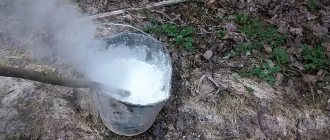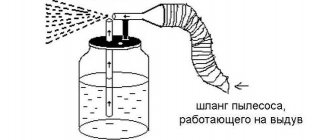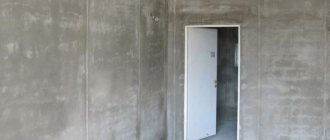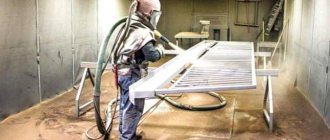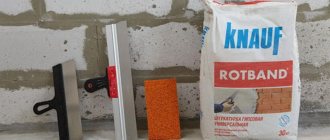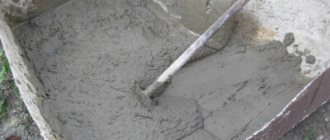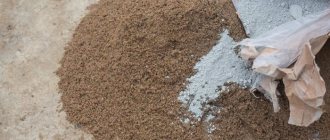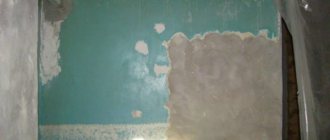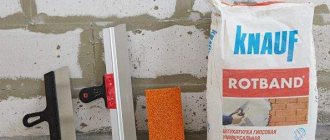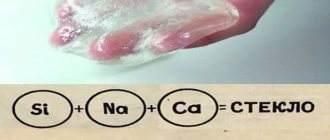So what is alabaster?
This is really a “subspecies” of gypsum. Like building gypsum, it is obtained from a natural mineral - gypsum stone, both of them are calcium sulfate, only the first is dihydrate (CaSO4•2H2O), and alabaster is semi-hydrous (CaSO4•0.5H2O) .
The mineral is crushed and then fired at a temperature of about 180C.
The grind of alabaster is finer than that of building gypsum, and therefore this material has less ductility, but greater hardness.
Also, its unique feature is the drying time - alabaster mortar sets on average in 5 minutes, that is, much faster than other building mixtures.
These properties narrow the range of applications of alabaster to construction and finishing works, while gypsum can be used in many industries, including medicine, jewelry, casting, art, etc.
Type of plaster
β-modification gypsum
β-modification gypsum is obtained at a temperature of 150-180°C in apparatus connected to the atmosphere. The product of grinding β-modification gypsum into a fine powder before or after processing is called building gypsum or alabaster; with finer grinding, molding gypsum is obtained or, when using high-purity raw materials, medical gypsum.
Gypsum α-modification
α-modification gypsum is obtained by low-temperature (95-130°C) heat treatment in hermetically sealed ovens. It is used to make high-strength gypsum.
Alabaster
Alabaster (from the gr. alebastros - white) is a fast-hardening air binder, consisting of semi-aqueous calcium sulfate CaSO4 • 0.5H2O, obtained by low-temperature processing of gypsum raw materials.
Alabaster is β-modification gypsum, a powdery binder material obtained by heat treatment in open furnaces at a temperature of 150-180 degrees of natural dihydrate gypsum CaSO4 2H2O . The resulting product is ground into a fine powder. With finer grinding, molding gypsum is obtained. For medical gypsum, raw materials of high purity are used.
Anhydrite
Anhydrite is a natural anhydrous gypsum. The anhydrite binder is slow-setting and slow-hardening, consisting of anhydrous calcium sulfate CaSO4 and hardening activators.
Estrich-gypsum
High-fired estrich gypsum is produced by firing natural gypsum stone CaSO4 • 2H2O to high temperatures (800-950°C). In this case, its partial dissociation occurs with the formation of CaO, which serves as an activator of anhydrite hardening. The final hardening product of such a binder is gypsum dihydrate, which determines the performance properties of the material.
The technological properties of estrich gypsum differ significantly from the properties of ordinary gypsum. Setting time for estrich gypsum: start no earlier than 2 hours, end is not standardized. Due to the reduced water requirement (for estrich gypsum it is 30-35% versus 50-60% for ordinary gypsum), estrich gypsum forms a more dense and durable material after hardening.
The strength of the samples - cubes of mortar with a rigid consistency composition - binder: sand = 1:3 after 28 days of hardening in wet conditions - 10-20 MPa. Based on this indicator, the grade of estrich gypsum is determined: 100, 150 or 200 (kgf/cm2).
Estrich gypsum was used in the late 19th and early 20th centuries. for masonry and plaster mortars (including for the production of artificial marble), installation of seamless floors, bases for finished floors, etc. Currently, this binder is used to a limited extent.
Characteristics and types of alabaster
The main average characteristics of alabaster are presented in the table below:
| Compressive strength | 4.0 MPa |
| Flexural strength | 2.0 MPa |
| Binder grade | G5 - G6 for building mixtures, as well as for the production of plasterboard, gypsum particle boards and gypsum boards G13-G25 for the production of high-strength elements |
| Water consumption (in terms of 1 kg of dry mixture, according to snip) | 0.65-0.70 liters |
| Setting time | 5-30 minutes from start to finish |
| Fire resistance | heating up to 700° without destruction |
| Color | White, pearl gray, yellowish, light green, light pink (the color depends on the characteristics of the deposit and, according to experts, does not affect the strength qualities of the finished surface) |
Since one of the main features of the mixture is the rapid development of strength, three types of alabaster are distinguished according to the speed of hardening:
| View | Index | Start of setting, min. | End of setting, min. |
| Fast-hardening | A | 2 | 15 |
| Normal hardening | B | 6 | 30 |
| Slow-hardening | IN | 20 | No standard |
What is important to remember when diluting building gypsum
Construction gypsum shrinks when hardening, increasing its volume by up to one percent. The setting time for building gypsum of class A, B, C is two to five, six to twenty, twenty minutes. The compressive strength of building gypsum types varies and is measured in megapascals. Common types of gypsum - G-2, G-3, G-4, G-6, G-7 belong to class B and have an optimal setting time.
Mistakes when diluting building gypsum
Using hot water is the wrong step. Hot, warm water helps reduce the setting time of the gypsum mixture.
Neglect of safety rules. Gypsum is diluted using protective gloves. When plaster comes into contact with the skin, it does not cause allergies or burns, but it dries out the skin greatly, causing discomfort. Hardened plaster is difficult to “tear” away from the skin without damage. Using the wrong type of plaster. For interior finishing work, class B gypsum of grades G-2 - 7 is used. Properly prepared gypsum mortar from unsuitable grades will crack when setting.
Dilution of building gypsum is a simple process. Remember our tips and you will succeed!
Benefits of alabaster
- Fast and smooth!
Thanks to the speed of setting, the surface can be leveled literally in minutes, and after an hour, and even then if taken with a reserve, it is already ready for further processing. - Alabaster solution has high adhesion and fits perfectly
on almost any prepared surface - When frozen, alabaster has good strength characteristics
and. To this day, elements of palaces and temples that are more than 5 thousand years old have been preserved, and they are in excellent condition. When dry, the material does not shrink and is resistant to cracking - Hardened alabaster absorbs noise
, so it can be used as an auxiliary material for sound insulation.
6 hours of exposure to open fire
- this is how much alabaster can withstand without significant deformation. It does not burn itself and prevents the spread of flame. - The material contains no chemical additives
, it is environmentally friendly and can be safely used in bedrooms, children's rooms, etc. - Affordable
price compared to similar dry construction mixtures.
Alabaster and gypsum powder - differences?
Often, novice craftsmen are faced with situations when a sales consultant in a construction market asks to clarify what exactly is needed for the work - gypsum powder or alabaster. Most people think that both terms have the same meaning, but in reality this is not the case. There are various factors that make both materials different from each other. So, alabaster is one of the varieties of gypsum construction powder. The first can only be used in the field of construction, while the second has found application in the field of medicine. Another difference is that the “dough” of alabaster is harder than the gypsum mixture. The fact is that the first material is not used as often as the second. The applied and dried gypsum mixture is much safer for the human body. It does not emit vapors that are capable of producing alabaster. Moreover, gypsum coatings are much less susceptible to the appearance of fungal colonies.
Application of alabaster
Due to the characteristics of the material, the range of applications of alabaster in construction is wide: it is relevant for the production of drywall, in demand by professional builders, and is also often used by private owners for minor repairs.
- Correction of cosmetic defects in walls
, ceilings and plasterboard/gypsum board surfaces. Alabaster mixture is traditionally used to repair various chips, dents, cracks, etc. - Preparing surfaces for finishing
The alabaster mixture is excellent for puttingtying walls and partitions in rooms with normal humidity; it is used to prepare surfaces for all types of wallpaper, as well as decorative plaster. Some builders even use alabaster in bathrooms, under tiles, but in this case it is necessary that the material is completely hidden by the cladding and not in contact with water. This principle is also true for the kitchen, since alabaster absorbs moisture vapor. - Electrical installation work
Alabaster is an electrician's delight, a convenient material that allows you to quickly fix the cable in the wall without the risk of it moving while the mixture dries. In addition, many people use it when installing socket boxes, because... even if the plug is roughly pulled out of the socket, the structure, thanks to the hardness of alabaster, is guaranteed to remain in the wall, which sometimes more expensive and modern dry mixes cannot provide. - Interior design
. When decorating rooms with stucco, a specific problem often arises: cast gypsum elements have considerable weight and therefore must be firmly fixed to the base. This is especially true for ceilings. And alabaster in this case is an ideal option. It will also come to the rescue for masking and repairing small flaws in stucco molding and is indispensable for restoration work.
Alabaster - areas of its use in construction
Alabaster is a dry, fine-grained mixture that can be used for a large number of construction works. In most cases, the material is used to perform various construction tasks and to create many decorative objects. Alabaster also performs other functions:
- used for sealing seams, cracks, holes and chips;
- used for fixing cables in grooves when performing electrical installation work;
- used for the manufacture of beacons and slopes;
- used for puttying of enclosing structures.
Alabaster
In the case of the last two tasks, alabaster should be diluted together with cement mortar. Its use in its pure form for puttying and making structures is impractical, since this material hardens very quickly.
Preparing for work
When working with alabaster, half of the success depends on the quality of preparation, namely, on the selection of containers and tools. To make the process easier, consider the following principles.
- No metal containers right away
! Alabaster will stick tightly to the iron walls, which means loss of material, inconvenience and damaged container. Plastic dishes are better suited, but the most comfortable option is still rubber: the solution does not stick to the springy walls, and after finishing the work, the dried residues can be easily shaken out; to do this, just squeeze the mold several times and then turn it over. In addition, if desired, you can purchase special buckets for working with plaster in hardware stores. - There is no container with the remaining solution right away
! The dried solution accelerates the hardening of the new batch being mixed. - As for the spatula, modern tools made of plastic or rubber
; the mixture does not stick to them. But a classic steel spatula is also quite suitable, preferably a new one: according to the observations of some craftsmen, rust accelerates the setting of the already fast-hardening solution
For small volumes of mixture
It is convenient to seal small portions of alabaster in nylon buckets or compact rubber containers
. Often builders use halves of ordinary children's balls of suitable diameter.
A spatula is optimal for stirring “small doses” of the alabaster mixture.
For large volumes
Plastic or rubber bucket
line with a single piece of cellophane, dense and without holes, pin the “tails” to the edges of the container so that the polyethylene does not move during stirring; After use, the film is simply removed from the bucket and thrown away.
It is convenient to stir the solution with a construction mixer, or, if it is not available, with a drill with an attachment.
Production technology
Deposits of natural gypsum can be sedimentary, residual or metasomatic (according to the type of formation). In Russia, large deposits are mainly sedimentary. When developing most deposits, mining is carried out using the quarry method, but due to natural conditions in some deposits it is necessary to use the room-and-pillar method.
The extracted raw materials are delivered to the processing plant. There it is crushed first in a screw crusher and then in a hammer mill. After this, the resulting powder is dried and subjected to heat treatment - firing in special digesters. This is the most common technology for the production of building gypsum, but there are others. For example, firing can be carried out in rotary kilns or in combined grinding and firing mills.
Most often, firing takes place at a temperature of 150-180°C. Drying occurs in two ways:
- In an open oven, water comes out in the form of steam. The resulting β-gypsum is fibrous in structure with a loose crystal lattice. It is quite porous, with pores located both between the fibers and inside the crystals. It is usually used in construction as a molding or binding material.
- In an autoclave, water is removed by the drip method. When processing with high pressure, moisture begins to be released already at low temperatures (from 60°C). The result is less porous and more durable alabaster, which can be ground into a fine powder. Also, the autoclave dehydration method allows you to reduce the amount of impurities and obtain a very pure result. It is noticeably more expensive, so it is used mainly in medicine, for example, for dental casts, and art - sculptures and decor made from it look neat and are more durable.
After dehydration, the chemical formula looks like CaSO4 0.5H2O. The resulting semi-aqueous gypsum is crushed into a fine powder and packaged in paper or plastic bags.
Mixing and working with the solution
Here it is important to answer three questions: in what proportion to mix, how exactly to mix and what nuances should be taken into account when mixing?
Actually, the proportions depend on the purposes for which the solution is planned to be used. SNiP recommends the following ratios:
| Amount of dry mixture | Amount of water | |
| For mixing alabaster plaster and putty mortar | 1 kg | 0.65 l. |
| For installation and repair mortar | 1 kg | 0.5 l. |
| For liquid putty mortar | 1 kg | 1 l. |
In order not to ruin the material and get a high-quality solution, strictly adhere to the technology
.
- Remember that the mixture is added to water, but in no case vice versa
! - The powder should be poured gradually
, like flour into pancake dough, and
mixed thoroughly
until the mass is homogeneous. - The correct putty solution has the consistency of mousse or yogurt.
- If the solution begins to harden and you haven’t had time to use it up
or do what you planned,
just throw it away
without trying to “reanimate” it by adding water. With alabaster, the principle “it died like that” is 200% correct; the set solution is no longer suitable for anything. - When applying the solution, keep in mind that when it dries, the material increases slightly in volume.
Tips from the experts:
- Theory and SNiPs
- this, of course, is good, but in practice, alas, the dry mixture can behave differently, it all depends on the brand and even the batch. Therefore, before closing the entire required volume, conduct a test with 100 grams of material.
- For shuttering use cold water
.
- When mixing the solution, it is certainly worth strive for uniformity
. However, overdoing it is also fraught: there is an opinion that mixing too long and thoroughly, especially with a mixer, disrupts the structure of alabaster, as a result of which it loses strength.
Rules for preparing the solution
Alabaster, despite its high adhesion to most substrates, has little contact with rubber. Therefore, to prepare the solution, it is better to use a special bowl or a cut ball or chamber. You can take a plastic container. The metal will have to be constantly cleaned mechanically. As a last resort, use disposable plastic bags for each batch.
To carry out repair work, the following proportions are observed for diluting alabaster (mixture/water):
- 1/0.5 – fixation of wires, boxes, pipes, beacons;
- 1/0.65 – filling minor voids;
- 1/1 – surface leveling.
The mixture must be mixed in a short time (no more than 2 minutes). To prevent the formation of lumps, the powder is added to the water gradually. The volume is selected in accordance with the optimal production during working hours. In case of exceeding 1 liter, it is recommended to use a power tool with a whisk for fine-grained mixtures.
The mixture is added to the kneading water Source gidpokraske.ru
About the intricacies of growing alabaster
The main feature of water mixtures with alabaster is their rapid hardening. This circumstance should be taken into account before starting to breed it. In addition, the speed of setting leads to the formation of hardened mixture residues in the containers underneath. Therefore, sometimes it is not easy to remove them from metal buckets and tanks.
To save yourself from mistakes when breeding alabaster you need to:
- prepare the mixture in small portions to prevent it from hardening earlier than after five minutes
- for dilution, it is better to use containers made of rubber or silicone, which are easy to clean
- place a plastic bag inside the container, the top edge of which is securely fixed before stirring
- strictly observe the ratio of alabaster and water to prepare a specific solution
- pour dry alabaster into water gradually, stirring constantly until a mass is obtained without lumps and bubbles
At what proportions is building plaster obtained?
Construction plaster can be prepared for various finishing operations. For each of them, regulatory documentation provides for certain requirements for the preparation of asbestos solution. So, if it is intended to be used to fill grooves when performing work related to laying electrical wiring, one kilogram of alabaster should be diluted in half a liter of water.
When preparing a plaster mortar based on alabaster and lime, a kilogram of dry powder is diluted in 650 grams of lime mortar or water. A liquid putty solution, with the help of which unevenness on the walls is leveled, a kilogram of dry building plaster is poured into a liter of water.
Recommendations for growing alabaster
The main thing when diluting alabaster is to pour the dry mixture into water. If this is done in small portions while stirring, the formation of lumps is minimized.
However, a high-quality solution is also ensured:
- using mechanical tools in the form of a drill with stirring attachments
- moistening the alabaster while stirring by hand, after which it is intensively stirred with a spatula
- inadmissibility of diluting a mixture that has set with liquid due to loss of quality
About the intricacies of growing alabaster
The main feature of water mixtures with alabaster is their rapid hardening. This circumstance should be taken into account before starting to breed it. In addition, the speed of setting leads to the formation of hardened mixture residues in the containers underneath. Therefore, sometimes it is not easy to remove them from metal buckets and tanks.
To save yourself from mistakes when breeding alabaster you need to:
- prepare the mixture in small portions to prevent it from hardening earlier than after five minutes
- for dilution, it is better to use containers made of rubber or silicone, which are easy to clean
- place a plastic bag inside the container, the top edge of which is securely fixed before stirring
- strictly observe the ratio of alabaster and water to prepare a specific solution
- pour dry alabaster into water gradually, stirring constantly until a mass is obtained without lumps and bubbles
At what proportions is building plaster obtained?
Construction plaster can be prepared for various finishing operations. For each of them, regulatory documentation provides for certain requirements for the preparation of asbestos solution. So, if it is intended to be used to fill grooves when performing work related to laying electrical wiring, one kilogram of alabaster should be diluted in half a liter of water.
When preparing a plaster mortar based on alabaster and lime, a kilogram of dry powder is diluted in 650 grams of lime mortar or water. A liquid putty solution, with the help of which unevenness on the walls is leveled, a kilogram of dry building plaster is poured into a liter of water.
The main thing when diluting alabaster is to pour the dry mixture into water. If this is done in small portions while stirring, the formation of lumps is minimized.
However, a high-quality solution is also ensured:
- using mechanical tools in the form of a drill with stirring attachments
- moistening the alabaster while stirring by hand, after which it is intensively stirred with a spatula
- inadmissibility of diluting a mixture that has set with liquid due to loss of quality
The main property of alabaster is the ability to quickly harden when mixed with water. This creates a durable and stone-like surface. Thanks to these properties, it is widely used in various branches of construction, industrial production, and art. It is used to seal seams in surfaces, holes and irregularities.
When carrying out electrical wiring, wires and cables are secured with alabaster in specially prepared grooves. They are used to putty on walls and other surfaces of premises and various building structures.
However, ordinary alabaster quickly sets and hardens, after which it is not recommended to re-mix it with water. The quality of such a mixture deteriorates sharply.
Experienced craftsmen have their own techniques for prolonging the action of the finished solution. According to one of them, a small amount of wallpaper glue is added to a container with such a solution.
After this, it is tightly covered with a piece of plastic film. Craftsmen claim that this makes it possible to increase the setting time of the alabaster mixture without loss of quality.
Selecting containers for preparing the mixture
Since the mixture obtained from alabaster powder tends to harden quickly, diluting this material with water is somewhat different from other similar solutions . If you prepare the mixture in a bucket or bowl, then when the alabaster hardens in it, the container will have to be constantly cleaned of it, which is problematic. In this case, experienced builders try to dilute a small amount of alabaster using rubber containers.
The remains of alabaster can be easily removed from there by squeezing an elastic thing. Such a convenient device can be made from a simple chamber, half a rubber ball. When diluting large quantities of the mixture at a time, the inner surface of the container, in order to preserve it, is covered with plastic film, the edges of which are securely fastened.
The difference between alabaster and plaster
Often people who do not have the necessary information consider both alabaster and gypsum to be the same material . In fact, alabaster is obtained from gypsum after its thorough processing. First, the gypsum is crushed, converted into powder, then heated until a temperature of 180° is reached. As a result of all operations, alabaster is obtained.
A little about plaster
This is a natural material, environmentally friendly, odorless . Unlike alabaster, it has a wider range of uses. Its frequent use in construction is due to its good viscosity, fast, durable drying, and significant resistance to fire.
On the positive side, gypsum is characterized by the fact that it is able to absorb excess moisture in the room; and if there is a lack of moisture, it can give it back. Other building materials do not have such a unique property, which allows gypsum to become widespread in interior finishing work for residential (industrial) premises.
Differences
Visually, the difference between these two substances may not be detectable. It should rather be sought in the properties of each of the materials , rather than in a simple inspection of the result of their application. Gypsum, unlike alabaster, has greater versatility in use. Gypsum is used in various fields of human activity. Among them is medicine, where it is used in the making of casts.
Such plaster casts are needed in dental clinics for the manufacture of dentures. The casts are of high quality. This promotes precise work that results in a person being comfortable with artificial teeth. Making dental impressions is just one of the uses of gypsum in the medical field, where it has been used almost since the discovery of the material.
For example, it is well known that when an arm (leg) is broken, a special bandage (plaster) is applied . In addition to medicine, gypsum is used in architecture and art. Gypsum was used to create various bas-reliefs and for the interior and exterior decoration of classical buildings with stucco. In sculptures and applied arts, gypsum-based decorations are also popular.
The alabaster mixture dries and hardens faster than plaster. This property prevents the use of alabaster in the field of medicine and art. Often, even during construction work, components are added to the alabaster mortar that prevent it from hardening. There are no such problems when working with gypsum. Gypsum, unlike alabaster, is softer.
Selecting containers for preparing the mixture
Since the mixture obtained from alabaster powder tends to harden quickly, diluting this material with water is somewhat different from other similar solutions . If you prepare the mixture in a bucket or bowl, then when the alabaster hardens in it, the container will have to be constantly cleaned of it, which is problematic. In this case, experienced builders try to dilute a small amount of alabaster using rubber containers.
The remains of alabaster can be easily removed from there by squeezing an elastic thing. Such a convenient device can be made from a simple chamber, half a rubber ball. When diluting large quantities of the mixture at a time, the inner surface of the container, in order to preserve it, is covered with plastic film, the edges of which are securely fastened.
Concept, types, properties
It is called building alabaster or gypsum
, consisting of a dry mixture of components. Gypsum is considered the main substance among them. The elasticity of alabaster is provided by polymer components. This material is classified as non-flammable, environmentally friendly natural materials. It has excellent soundproofing properties and water resistance.
Advantages and disadvantages
Before you start working with a mixture prepared from alabaster powder, you should study the characteristics of the material used. The powder is inexpensive and is in deserved demand among buyers for its excellent technological performance. In general, building alabaster has the following properties:
- dries quickly upon contact with water (sets in 5 minutes, completely hardens in 30 minutes), which makes the material indispensable when quick and high-quality surface finishing is needed;
- preventing the appearance of cracks;
- an even film is formed on the treated surface;
- good fire-resistant properties (difficult to ignite);
- high sound insulation.
This finishing material is light in weight and does not shrink during the hardening process. If the question arises as to whether alabaster is harmful to human health, then we can absolutely say that it is safe. The powder is predominantly white in color, but it also occurs in other colors: light gray, yellow, and sometimes it has greenish and pink shades.
What temperature can alabaster withstand?
It can withstand exposure to significant temperatures. Resists heat up to 700° without destruction. The destructive consequences of interaction with open fire will be visible after 6 hours.
Negative characteristics of the material include its insufficient strength and inability to withstand heavy loads. Due to the fact that alabaster can absorb water when hardening, it should not be used in particularly damp rooms. The frozen alabaster mixture does not like it when the air around is dry and hot, then the material will simply crumble due to loss of moisture reserves and a decrease in viscosity. Such disadvantages are eliminated by introducing various additives into the alabaster solution.
Features of the material
When working, you must remember the features inherent in this substance.
. In addition to the rapid hardening characteristic of it, it is capable of increasing in volume. A distinctive feature of this material is also that it does not stick to the surface of rubber products. It is even recommended to prepare a solution from it in a regular rubber ball. The material is stored in a dry place with humidity not exceeding 60%.
Currently, according to the speed of hardening, the material is divided into the following types:
- with rapid hardening;
- with normal hardening speed;
- with slow hardening.
In the first case, the mixture used will begin to set a few minutes after its preparation, and after a quarter of an hour it will completely harden. The solution of the second type will begin to harden after preparation after 7 minutes, and will finally harden in 35 minutes. For the latter type of mixture, hardening begins after 20 minutes. from the moment of preparation, and the solution will finally harden after 40 minutes.
